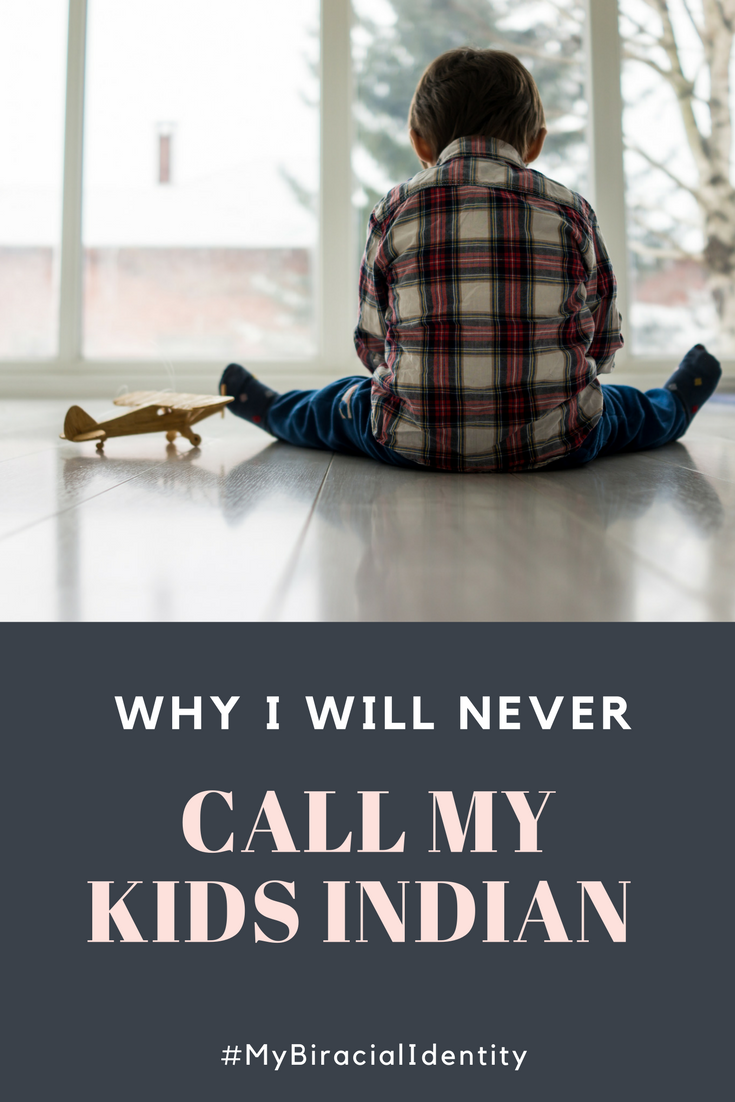Biracial Identity: Why I Will Never Call My Kids Indian
 While you're pregnant you often wonder what your kids are going look like. I always tried to piece my kid's faces together from pieces of my husband and I and what little glimpses we could see through ultrasounds.The only thing I was ever right on was the massive amount of hair my little boys had. All my heartburn was a dead giveaway on that one so it was an easy guess!However, the moment my eyes met theirs for the first time, I knew it didn't matter how many of mine or my husband's features there were in their little faces.They were perfect.
While you're pregnant you often wonder what your kids are going look like. I always tried to piece my kid's faces together from pieces of my husband and I and what little glimpses we could see through ultrasounds.The only thing I was ever right on was the massive amount of hair my little boys had. All my heartburn was a dead giveaway on that one so it was an easy guess!However, the moment my eyes met theirs for the first time, I knew it didn't matter how many of mine or my husband's features there were in their little faces.They were perfect.
They were a perfect blend of both of us and I couldn't have loved them any more than I did.
My kids are blessed with two distinct cultures in their lives that are blending together into their own unique culture. I love watching how each of my boys blend cultures differently. They each put their own unique touch on it because they all have different ideas, experiences, and opinions.My kids will have to figure out their own biracial identity for themselves. My husband and I do our best to be there for them and help them to experience both of our cultures. We encourage them to try things and to be brave in everything that they do. 
However, one thing you won't ever see me do is referring to them as solely Indian.
You might think it's funny, but there's more to it than you think.Have you ever heard of the "one-drop rule?" It was a racial classification back in the 19th century that said anyone with African American ancestry was deemed, Black. This means you just needed "one drop" of African American blood. People used this to show any biracial child or adult that they were less than everyone else.Most people think this idea was a thing of the past. Sadly to say, it's far from over. There are so many biracial adults that identify as one piece of their biracial identity.Halley Barry even brought up this rule in her custody battle with her ex. She cited the one-drop rule saying that her daughter is African American. She herself is biracial but identifies as an African American woman. She goes on to say her daughter will one day have to decide who she is much like she did as a child. She decided to identify with one piece of her ethnic background rather than being biracial.We've come so far from the time this rule was first introduced, but it's crazy to see that biracial identities still aren't celebrated like they should be.Some people have referred to my kids as Indian, but I correct them. They aren't just Indian. They are a beautiful blend of Indian and Caucasian culture.
I don't ever want my kids to feel ashamed of their biracial identity.
I want to help them fall in love with everything their culture has to offer instead of falling for this trap that they have to fit into this perfect little race bubble.We need to break open the box for our kids. They don't have to follow what society says and pick a race to identify with. Biracial children and adults get to write in their own answer.Biracial.
It's something to be proud of.
For some, it may show the fight their parents had to go through for their love to be accepted. For others, it may show how love can conquer all distance between one another.My kids are a bit of me and a bit of my husband. Now they get to figure out what they'll take from each side and I'm excited to see what they'll do.
